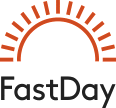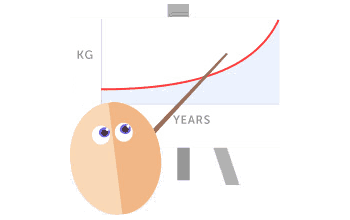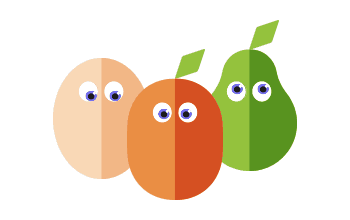worth a go, we'll only know once we've done it !
Log in to view your messages, post comments, update your blog or tracker.
91 posts
Page 4 of 7
Go for it,be interesting even if we just found out everyone reacts differently to 5:2 . Mind you that's easy for me to say as not being technically minded I'd be leaving all the work to someone else! Though I would volunteer to fill in the questionnaire.
carorees wrote: So, getting back on track...do people think it is worth doing a survey of the top and bottom quartiles of weight loss? Even if the top losers are very overweight young chaps who do lots of exercise and the bottom are sedentary middle aged women with just a little weight to lose, surely if we stratify the population by gender and BMI we could get some interesting info.
So my suggestion is first to stratify and then take the top and bottom quartiles of each population and either obtain data prospectively by asking them to continue 5:2 in exactly the same way as before and then answer a questionnaire or retrospectively by just sending out the questionnaire. We could ask for volunteers or ask Moogie if the progress tracker data could be used to identify members by applying the relevant filters and then extracting the top and bottom quartiles who we could send the questionnaire to (keeping the data anonymised).
If you all think its a waste of time, I'll stop banging this drum!
You asked me about study design for this one on another forum. There are many ways of doing this, most of them relatively complicated. Just some thoughts:
What variables do you want to stratify for? Gender and starting BMI you have already indicated. They also would need to be homogeneous with respect to time on diet, since the weekly loss diminishes over time.
Within these strata, you examine additional variables which you think may have an effect: age, level of activity, type/duration of exercise, calorie intake on fast and on feed days (either as a number, or as below TDEE, at TDEE, above TDEE, using the same TDEE calculator). You may have more (thyroid disease?) Dietary composition could also be of interest, as are psychological factors, and variables could interact, but let's not make it more complicated than it already is.
In linear regression you need at least 10 obervations (= participants) per included/examined variable. Comparing upper and lower quartile you would use logistic regression, which I'm not familiar with - but probably no less than 10 observations there either
The other question is: what is your outcome/effect. Is it reliably measured? Trends are statistically more difficult to analyze, so I would go with a single measure, e.g. weight loss over 4 weeks (preferably something like "from week 6 to week 10"). Start and end weight measured on 2 consecutive days and averaged. Standardized with respect to interval from last fast day. I agree that different scales with their inaccuracies don't matter much, unless their results are completely inconsistent from day to day.
Everything that is not standardized/matched would require some kind of adjustment, requiring further registration and statistical analysis.
Retrospective data collection is always a weakness (recall bias). Also, you are missing the dropouts - those that did not succeed and stopped adding their data to the tracker. A prospective study cancels out more bias, but is more difficult to perform.
My personal view: You have already summarized some relevant findings in the post about average weight loss is 1 lb/week. Teasing out more factors by survey reliably requires a lot of work. It seems rather ambitious, depends if you have the time. If not, I would actually consider it a waste of time, if the answers are not reliable.
But you could identify some main factors that you want to examine and include them in the progress tracker (exercise, bingeing, thyroid disease, calorie counting, calorie intake on fast days, type/duration of exercise, fitbit data if available) and hope people would take the time to register them. That would still be biased in several ways, but could give you some hints.
Coffeecat I like the suggestions for additional data retrieval you propose in your final paragraph. That is the sort of detail that I would personally be very interested in learning more about; I suppose like most people I am aiming for the maximum benefits of 5:2 and would appreciate any information about changes/inprovements I can make.
I don't think we can ask Moogie to add that to the progress tracker but we could still collect data from those willing to diarise it separately?
Sure, although the drawback is a big selection bias. Still, it might provide some answers, but without being generalizable. But that would require someone who plots the data into a database. And someone well versed in statistics 

Well we certainly would have a large sample base. I know what you are saying above about water and room temperature etc making a difference but what interests me is why there can be such a huge difference in weight loss from people who are seemingly doing the same thing. I would be really interested in taking samples from 'like' groups and looking at their methods and habits quite closely in order to identify the specifics that are making the difference and then using that as a template for the other age groups to see if the same applies. Fascinating stuff.
Yes, that's what I want to do...shall we ask for volunteers? I would say we ask only those who have been going for more than a month to volunteer.
Be glad to help.
Ok, so how about this plan? This is of course probably a bit optimistic but until we know how many volunteers we have we don't know how much we can do!
1)Call for volunteers to take part in a survey:
Inclusion criteria:
Over 1 month on 5:2 (not 4:3 etc as yet)
Currently overweight (BMI 25 or more)
Willing to provide calorie counts for both fast and non-fast days for the next month
Willing not to change the format of their fasting, feed days and exercise for the next month
Willing to answer a questionnaire on dietary habits, exercise medical history etc
Willing to keep a diary of food, exercise etc.
Exclusion criteria:
Already at target weight/normal BMI
Followed the diet for less than 1 month
2)Prepare a questionnaire including questions to cover the following:
Age
Gender
Medical history
Diet history (how recently you last dieted, how much weight lost by other means before starting 5:2 etc)
Previous eating habits (i.e., has the 5:2 resulted in a big change?)
Time on diet
Starting BMI
Height
Weight at start of month and weekly weigh-ins
Waist measurement at start of month and weekly changes
Exercise amount, intensity, frequency (will need to discuss exactly what data we need to collect so that respondents can keep a diary)
For women: pre, peri or post-menopausal?
History of thyroid problems/fibromyalgia/ME etc?
Current medications
TDEE (though we will also calculate this using a standard calculator from the data gathered, both for start and end of the month)
Fast day format: meals taken and calorie split, days between fasts, exercise on fast days, lengths of time with no/<10cal intake
Nutritional composition of fast day meals (high/low carb; high/low fat; high/low protein)
Feed day formats: meals taken, calorie content, high/low carb etc, exercise on feed days, bingeing
Home environment: warm/cold
Sleep: good/poor
3) Data analysis
Divide into subgroups according to gender, age bands, and starting BMI
calculate each volunteers weekly weight loss and waist decrease over the month.
Divide each subgroup into quartiles (tertiles/quintiles??? depends on population size) according to weekly weight loss
Compare top and bottom quartiles with respect to potential factors of interest. Depending on the number of respondents we can just do some simple stats or something more complex (advice needed here on stats)
So, people, please add more ideas/shoot down in flames!
1)Call for volunteers to take part in a survey:
Inclusion criteria:
Over 1 month on 5:2 (not 4:3 etc as yet)
Currently overweight (BMI 25 or more)
Willing to provide calorie counts for both fast and non-fast days for the next month
Willing not to change the format of their fasting, feed days and exercise for the next month
Willing to answer a questionnaire on dietary habits, exercise medical history etc
Willing to keep a diary of food, exercise etc.
Exclusion criteria:
Already at target weight/normal BMI
Followed the diet for less than 1 month
2)Prepare a questionnaire including questions to cover the following:
Age
Gender
Medical history
Diet history (how recently you last dieted, how much weight lost by other means before starting 5:2 etc)
Previous eating habits (i.e., has the 5:2 resulted in a big change?)
Time on diet
Starting BMI
Height
Weight at start of month and weekly weigh-ins
Waist measurement at start of month and weekly changes
Exercise amount, intensity, frequency (will need to discuss exactly what data we need to collect so that respondents can keep a diary)
For women: pre, peri or post-menopausal?
History of thyroid problems/fibromyalgia/ME etc?
Current medications
TDEE (though we will also calculate this using a standard calculator from the data gathered, both for start and end of the month)
Fast day format: meals taken and calorie split, days between fasts, exercise on fast days, lengths of time with no/<10cal intake
Nutritional composition of fast day meals (high/low carb; high/low fat; high/low protein)
Feed day formats: meals taken, calorie content, high/low carb etc, exercise on feed days, bingeing
Home environment: warm/cold
Sleep: good/poor
3) Data analysis
Divide into subgroups according to gender, age bands, and starting BMI
calculate each volunteers weekly weight loss and waist decrease over the month.
Divide each subgroup into quartiles (tertiles/quintiles??? depends on population size) according to weekly weight loss
Compare top and bottom quartiles with respect to potential factors of interest. Depending on the number of respondents we can just do some simple stats or something more complex (advice needed here on stats)
So, people, please add more ideas/shoot down in flames!
I'm willing to be part of this study and by time you are ready to start maybe I will qualify time-wise. I'm only into my 2nd week of 5:2.
Keep me in mind if more volunteers needed when this is set up.
Keep me in mind if more volunteers needed when this is set up.
by "overweight" are we saying BMI = 25.0 or higher ?
% fat (if known) would be more use than TDEE as otherwise you'll have a whole load of inconsistent formulae in use. Collect data, calculate derived values where possible.
The exercise thing looks a bit vague, may need something more quantitive perhaps up to 1 hr a week, 2-5, 6-10 or whatever.
% fat (if known) would be more use than TDEE as otherwise you'll have a whole load of inconsistent formulae in use. Collect data, calculate derived values where possible.
The exercise thing looks a bit vague, may need something more quantitive perhaps up to 1 hr a week, 2-5, 6-10 or whatever.
Yes, 25 or higher, yes, we should calculate TDEE but it would be interesting to know what value the respondent thought it was. I wondered about body fat but thought we might not have enough people who know and also the body fat analysers seem very unreliable, but we might as well ask! Yes, the exercise question would have to be carefully worded, probably to include HR achieved as a % of max and duration...to be decided!
I'll edit your suggestions into the plan above.
I'll edit your suggestions into the plan above.
Count me in - I measure weight, calories intake and exercise duration on a daily basis. This WOL is working for me and I am seeing weight loss. I also monitor my weight loss on
https://www.fourmilab.ch
I believe this sort of measurement keeps me focussed on the calories intake on a daily basis. It is so good to see a downward weight loss graph.
https://www.fourmilab.ch
I believe this sort of measurement keeps me focussed on the calories intake on a daily basis. It is so good to see a downward weight loss graph.
Caroline - I would recommend that you include something on previous dieting history/ experience in your questionnaire and also typical eating habits pre diet. Considering that I was at least 2 stone overweight when I started 5:2, 1/2 stone in 9 weeks would probably be considered relatively slow. I know from past experience though that this is 'normal' for me and it takes a mammoth effort and much tenacity to lose anything due to having a pretty healthy diet in the first place (so there's not a big step change). To benchmark v. Slimming World, it also took me 9 weeks to lose the same amount from around the same starting weight. The next 1/2 stone will be interesting as it took me 9 months on SW to lose this (due to boredom leading to slacking which I don't think is going to happen with 5:2  ). Hope this is useful, Julie
). Hope this is useful, Julie
 ). Hope this is useful, Julie
). Hope this is useful, Julie
91 posts
Page 4 of 7
| Similar Topics |
|---|
Who is online
Users browsing this forum: No registered users and 13 guests






